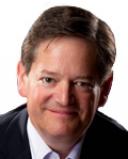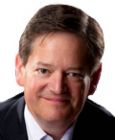Creativity
Why Creativity Is Risky Business
The perils posed by creativity aren’t the obvious ones.
Posted February 27, 2014
Every time a hugely talented actor (Philip Seymour Hoffman) or musician (Amy Winehouse) or writer (Christopher Hitchens) dies too young from alcohol or drug-related causes, the perennial question gets posed: Does alcohol and drug use help foster the creative process? If Christopher Hitchens hadn’t been such a prodigious drinker, for example, would he still have been Christopher Hitchens the writer?
The list of legendary writers who were legendary alcoholics might suggest that the answer is no: Hemingway, Fitzgerald, Kerouac, Capote, Parker, Chandler, Cheever—and the list could go on. Looking at the evidence from this narrow perspective, one could conclude that relinquishing control to alcohol or drugs helps fuel the creative process. As Fitzgerald once said, “First you take a drink, then the drink takes a drink, then the drink takes you.”
But where does the drink take you? Sometimes, it takes you to a tragic end, as illustrated by the pantheon of hugely creative people whose lives, not to mention careers, were destroyed or cut short by alcohol and drugs. Because of their talent, it’s easy to overlook their struggles with addiction—or even attribute their creativity to their reliance on alcohol and drugs.
But scientists have learned that people whose minds and lives are controlled by alcohol or drugs are not more creative or more successful as a result. When asked by Scientific American magazine whether there’s a link between creativity and addiction, neuroscientist David Linden of Johns Hopkins University School of Medicine responded succinctly, “No.” To suggest otherwise confuses coincidence with cause.
Addiction is a disease, not a shortcut to success. Hugely talented people who struggle with drugs and alcohol should be loved, and treated, and supported in every way. But their dependence on alcohol and drugs should not be seen as the source of their creativity, and thus mollycoddled.
In fact, we have a good idea where creativity comes from. David Shenk, in his recent book The Genius in All of Us: New Insights into Genetics, Talent and IQ, finds that what we call genius or brilliance comes from less risky sources, many of which we can and do control. As Shenk puts it, extraordinary talent and achievement is “the combined consequence of early exposure, exceptional instruction, constant practice, family nurturance, and a child's intense will to learn.”
Shenk goes on to caution against using this as a simple formula for creative success. He says, “Like a brilliant soufflé, all of these ingredients must be present in just the right quantity and mixed with just the right timing and flair. Almost anything can go wrong.” In other words, even though the process isn’t entirely controllable, your chances of a successful soufflé will certainly decrease as the chef’s control of the process decreases.
That said, it’s also true that outstandingly creative people somehow get released from the usual way of looking at things or doing things. In a recent book titled The Unleashed Mind: Why Creative People Are Eccentric, Shelley Carson points out that creativity and eccentricity are often rooted in the same cause, which has to do with how we process information. Because the volume of data that streams into our minds is staggeringly vast, most of us have built-in cognitive filters that keep most of it out. We simply can’t deal with the volume otherwise.
Highly creative people, it turns out, break through the usual constraints and let in a lot more of the available information, and thus they need to process and organize this increased information flow in untypical ways. The term for this trait, Carson explains, is cognitive disinhibition, which Carson describes as “the failure to ignore information that is irrelevant to current goals or to survival.”
This ability to look at the world differently—to think outside the box—can also pose ethical hazards, which is where creativity’s real risks lie. Looking at the world differently includes looking at rules differently.
Writing in the journal Psychological Science, Francesca Gino and Scott Wiltermuth report that “the sentiment expressed in the common saying ‘rules are meant to be broken’ is at the root of both creative performance and dishonest behavior. It also provides new evidence that dishonesty may therefore lead people to become more creative in their subsequent behaviors.” Gino and Wiltermuth conclude, “By acting dishonestly, people become more creative, which allows them to come up with more creative justifications for their immoral behavior, and therefore more likely to behave dishonestly.”
Creativity is risky business—but not because creativity happens when people lose control of their lives to drugs or alcohol. It’s risky because creativity makes it easy for hugely creative people, as well as those who admire what they create, to justify bad behavior.




